From Border Guards to Modesty Police: And All We Wanted Was Jesus
by Pringle Franklin
Second in a Holy Land Series
BETHLEHEM –The most famous birthplace on earth lies about 10 minutes outside of Jerusalem, but it feels like dropping into another world. One must cross a heavily guarded border post to enter Bethlehem. Depending on your point of view, it’s either considered the West Bank or the Occupied Territories. Muslim and Christian Palestinians live here, and an enormous concrete barrier topped by barbed wire, along with armed guards, restricts movement out of this dirty, impoverished neighborhood into modern and prosperous Jerusalem. (They are only 6 miles in distance.)
Violence and mistrust make such crossings tense; we stayed on our tour bus when we crossed into Bethlehem, just a bunch of innocent pilgrims buffered from the stress of having to present ourselves for inspection. Our guide handled whatever business needed to be done on our behalf. Some Palestinians are denied entry, for security reasons. In fact there was a random knifing in Jerusalem while we were there. No system is foolproof, but the Israelis have proven themselves formidable against threats and don’t take any chances about keeping their citizens safe. Therefore they carefully screen those passing through.
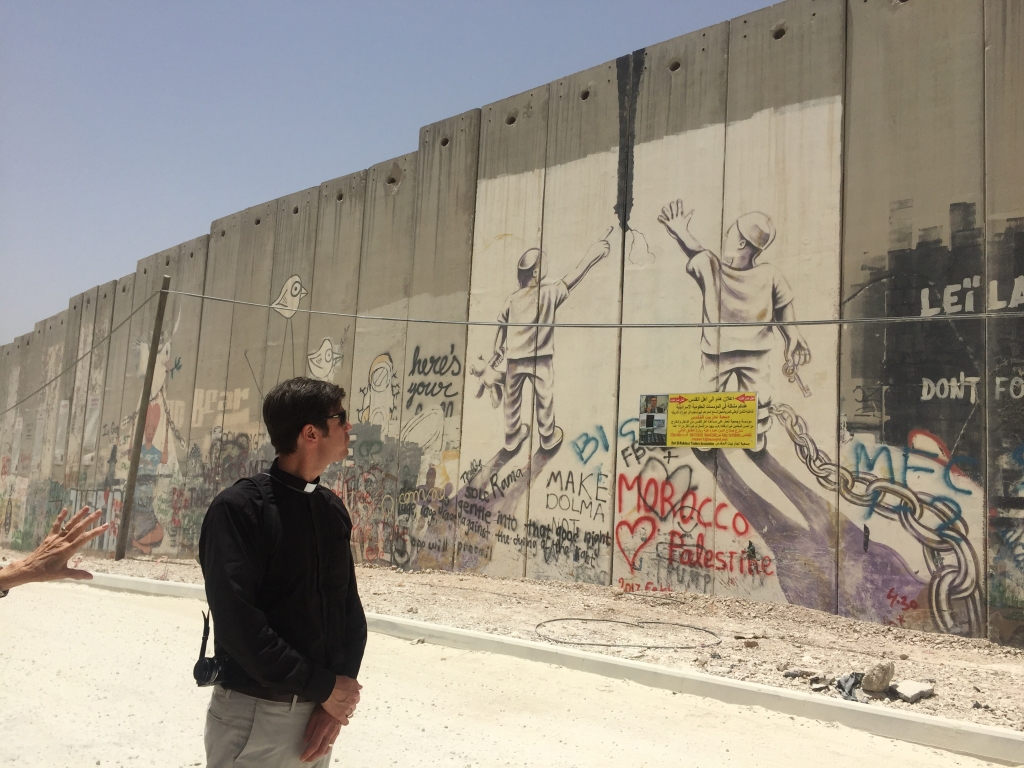 Naturally the Palestinians resent such restrictions, and graffiti artists have spray painted protest slogans and sorrowful images on the high-security prison type wall; one painted the Statue of Liberty weeping into her hands. Another spayed a Christmas tree (a symbol of Bethlehem) locked up inside a circular cage of concrete barriers.
Naturally the Palestinians resent such restrictions, and graffiti artists have spray painted protest slogans and sorrowful images on the high-security prison type wall; one painted the Statue of Liberty weeping into her hands. Another spayed a Christmas tree (a symbol of Bethlehem) locked up inside a circular cage of concrete barriers.
Being on the Palestinian side, where a few scattered and neglected olive trees were layered in heavy grey dust and many of the concrete buildings looked ramshackle and jumbled with junk, it felt depressing.
If Bethlehem was a humble place when Christ was born, a backwater village in a backwater region under under Roman rule, it retains much of that same ethos today.
As an American, it’s hard for me to comprehend the deeply held resentments in this volatile region, but based on the kind and decent people we met on both sides, I think peace would be possible if the hardline extremists would simply allow everyone to raise their kids and worship their God in freedom. Until the violence ends, the peacemakers don’t stand a chance.
But we were not here to investigate such matters; after passing through the borderline, I refocused my attention on the history of the Bible.
•••••
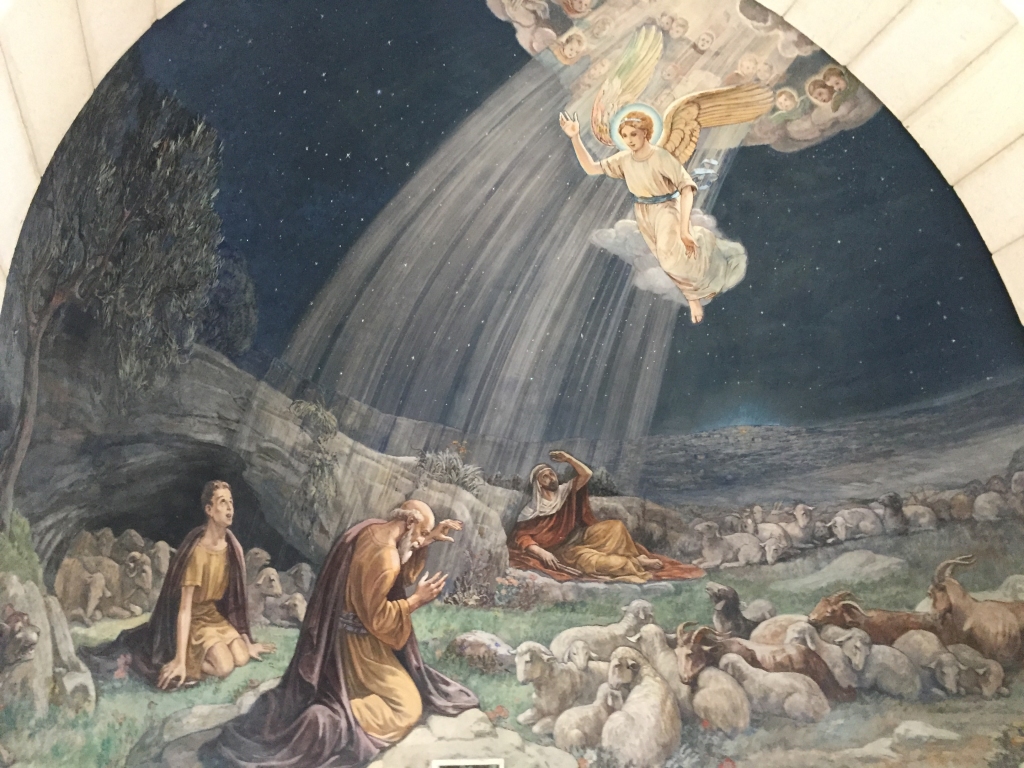 Before long, we had gathered for teaching and worship on the hillside known as Shepherds Field. Sitting there, looking down on concrete low-rise buildings and the dry, rocky terrain, I tried to imagine the shepherds when the angel chorus heralded the arrival of the Christ child.
Before long, we had gathered for teaching and worship on the hillside known as Shepherds Field. Sitting there, looking down on concrete low-rise buildings and the dry, rocky terrain, I tried to imagine the shepherds when the angel chorus heralded the arrival of the Christ child.
I had seen this scene depicted countless times on holiday cards and in Christmas pageants; it was mind boggling to actually be sitting in the fabled place. The Biblical story was real, and it happened somewhere very close to where we were listening to the account in Luke 2.
After our service, our guide led us to a small grotto with low ceilings naturally carved out in the side of the hill. This cave was used for penning up the sheep at night. The shepherds would sleep inside with their flock or, if the entrance could not be blocked, he would lie in the opening and serve as the gate.
It is fitting that the angels would reveal the wondrous news to the lowly shepherds, men with little if any formal education who smelled rustically rank and earned a meager living, because Jesus would refer to himself as the Good Shepherd who laid down his life for his sheep.
We learned that the shepherds did not own their guarded flock. A rich man would possess the sheep, and he would hold the shepherds personally accountable if even one lamb was eaten by a lion or was lost in the wild. The shepherds devoted their entire lives to guiding, calling forth, and protecting the sheep. By contrast, goats are too independent to follow a shepherd, so they were left to wander in herds with much less oversight, our guide told us.
Naturally this reminded me of Jesus saying that his Heavenly Father would separate the sheep from the goats at the final judgment,
rewarding the sheep for their devotion and casting out the goats for their waywardness. The agrarian folk listening to Jesus would have understood immediately the difference between sheep and goats.
These days the shepherds’ cave is a simple chapel, and its blackened ceiling indicates many years of campfire smoke from those taking shelter there. The angels appeared to the shepherds at night, when they were in this grotto. The bright light would have astounded the herdsman and their flock, as it emblazoned the sky above and filtered through the entrance to the cave. No wonder the shepherds were filled with dread.
In this ancient era where sundown meant total darkness, except for the moon or the stars, and people relied on torches to navigate through the inky night world, the shepherds had never encountered luminous objects like this.
The golden white light, along with the voice of Gabriel and the Hallelujah chorus, would have been shocking. This was God reaching down from his throne to touch the lowliest of men, and so the shepherds obeyed the call and went down into Bethlehem to worship the child. They would perhaps have left someone behind to stay with the sheep, our guide said. Imagine being the sleepy guy who volunteered for that job and missed out on visiting the Holy Family in the stable.
••••
As you remember, Joseph and Mary had been forced to travel several days from their home in Nazareth to Bethlehem because of a census. Our guide told us that Bethlehem was a small community and most likely only had one place for travelers to stay. We hear in our English language Bible that “there was no room at the inn” and imagine an ancient Motel 6 with every room filled. But it wasn’t like that.
There was one large room shared by all travelers, who would find a spot on the floor. By the time Joseph knocked on the door, every place had been occupied.
The innkeeper would have been familiar with Joseph, our guide explained, and he kindly offered to set up a place for them in the stable behind his inn with his animals. As God’s provision is perfect, this actually gave Mary more room and privacy to deliver her firstborn son.
Today the grotto is completely unrecognizable, covered by the Greek Orthodox Church of the Nativity that owns and protects the sacred spot. We had to wait in line with hordes of pilgrims from around the world for the chance to stick our hand down inside a hole in order to touch a moist and mysterious rock that is said to be the place of the Virgin birth. The hole is marked by a 14-pointed silver star, and you have to kneel under an elaborate altar to reach it.
The church is true to the Greek Orthodox style, meaning it looks like a cross between a shrine and a sultan’s palace — gold chains holding red lanterns, elaborate velvet drapes, gaudy gold ornamentation crammed from ceiling to floor, along with ubiquitous flat painted faces of saints looking out from the gold-leaded icons.
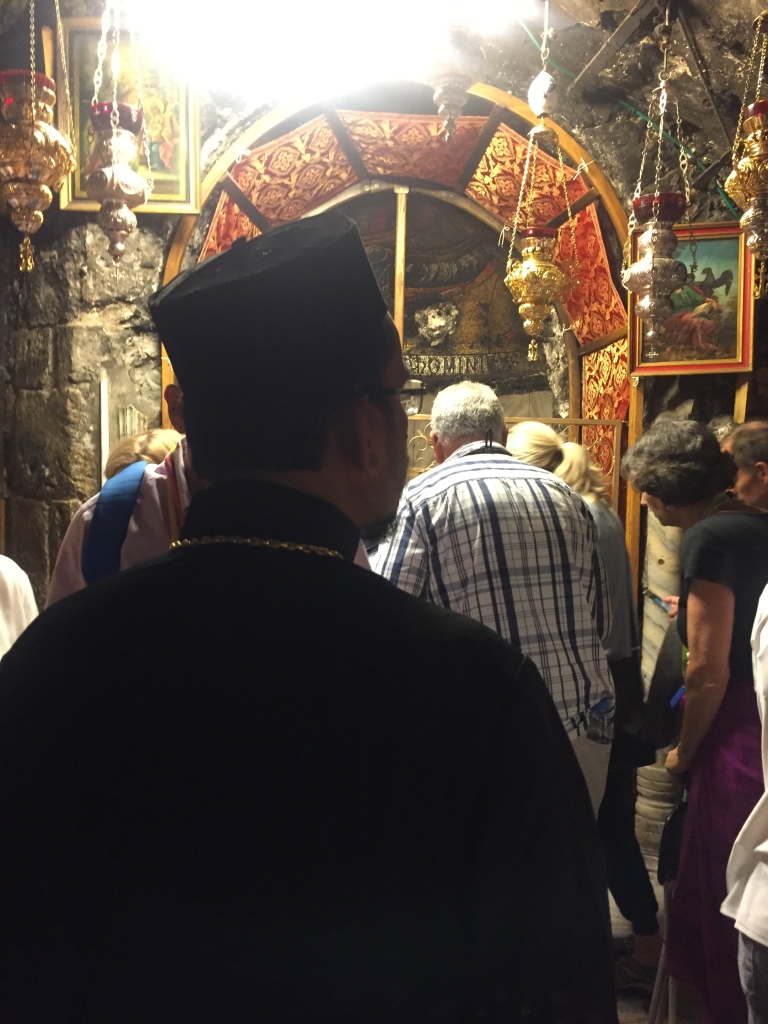
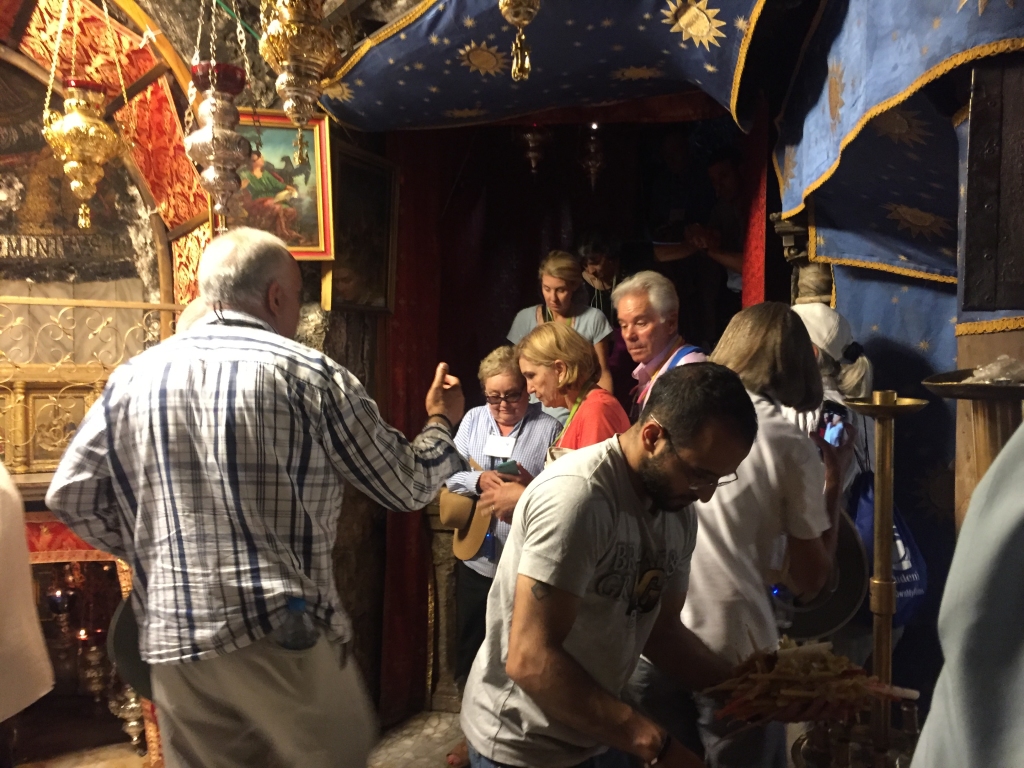 It did not feel like the simple stable that welcomed the Baby Jesus, but of course it was still a hot ticket for pilgrims and not to be missed.
It did not feel like the simple stable that welcomed the Baby Jesus, but of course it was still a hot ticket for pilgrims and not to be missed.
••••
My spiritual euphoria hit me back on the shepherd’s hill, inside an intimate white domed chapel with bluish mosaics of the angels on its concave ceiling. We circled up to sing “Angels We Have Heard on High”. As the glorias in excellais reverberated around us and filled our ears, I felt like I was singing along with the original heavenly choir on that miraculous night. The sound of our voices rose and swirled toward the top of the dome, hanging there with a sweet echo as our hymn ended.
Love and awe flooded my heart, and my soul was at peace. This is a memory that I will always carry within me.
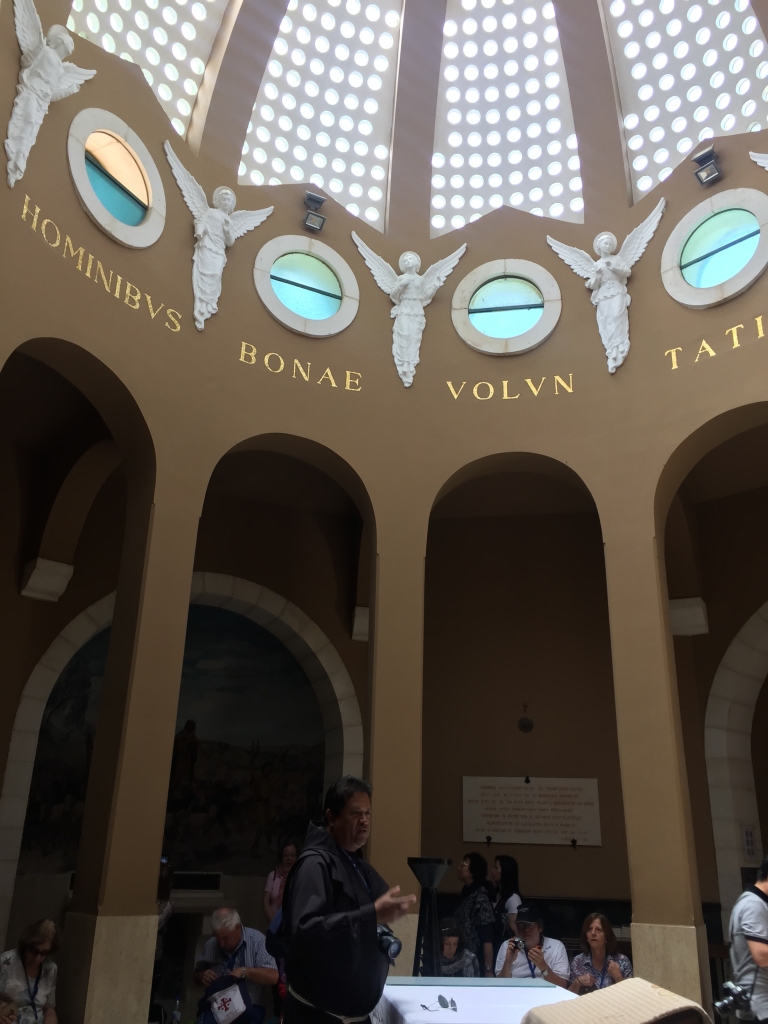 Plus, we sounded great, much better than we did on the bus. It was almost as if we were receiving a little help.
Plus, we sounded great, much better than we did on the bus. It was almost as if we were receiving a little help.
********************
So let’s talk about food.
In general, the fare in Israel is fresh, healthful, lots of salads and grains, and a seemingly endless supply of roasted chicken and rice. Often I will catch the exotic scent of turmeric and coriander, cumin and cardamon, hanging in the air outside a nearby restaurant or kitchen.
This morning I was eating a beet green salad with raisins, granola, and honey for breakfast. I love kale and spinach and everything leafy and green, but I don’t ever eat them as my morning meal. One morning on the Sea of Galilee in Tiberius, our hotel chef suspended a honeycomb dripping amber sweetness onto a platter. It was divine mixed into plain yogurt along with a fig paste.
The pilgrim package includes room and board, and all of the hotels lay out bountiful buffets for breakfast and dinner. The food is local, Middle-eastern styled in the spices, with lots of raw food and fresh, crispy vegetables, as well as pickled peppery things which I could not always identify.
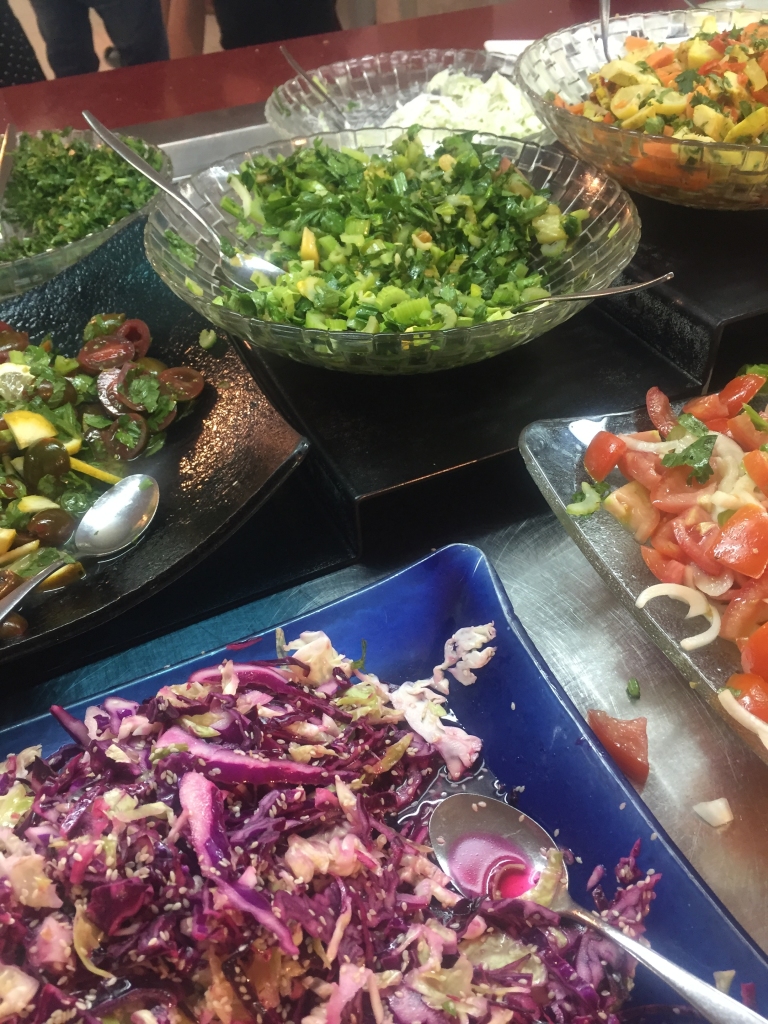 We are discovering much about the Middle East by sampling traditional meals. My favorite food was the roasted eggplant wedges prepared in a Palestinian restaurant run by the third generation of a family. If peace could ever come to this volatile region, I suspect it would happen over a table laid out with olives, hummus, pita bread and savory caramelized roasted eggplant. Such good soul food generates goodwill.
We are discovering much about the Middle East by sampling traditional meals. My favorite food was the roasted eggplant wedges prepared in a Palestinian restaurant run by the third generation of a family. If peace could ever come to this volatile region, I suspect it would happen over a table laid out with olives, hummus, pita bread and savory caramelized roasted eggplant. Such good soul food generates goodwill.
******************
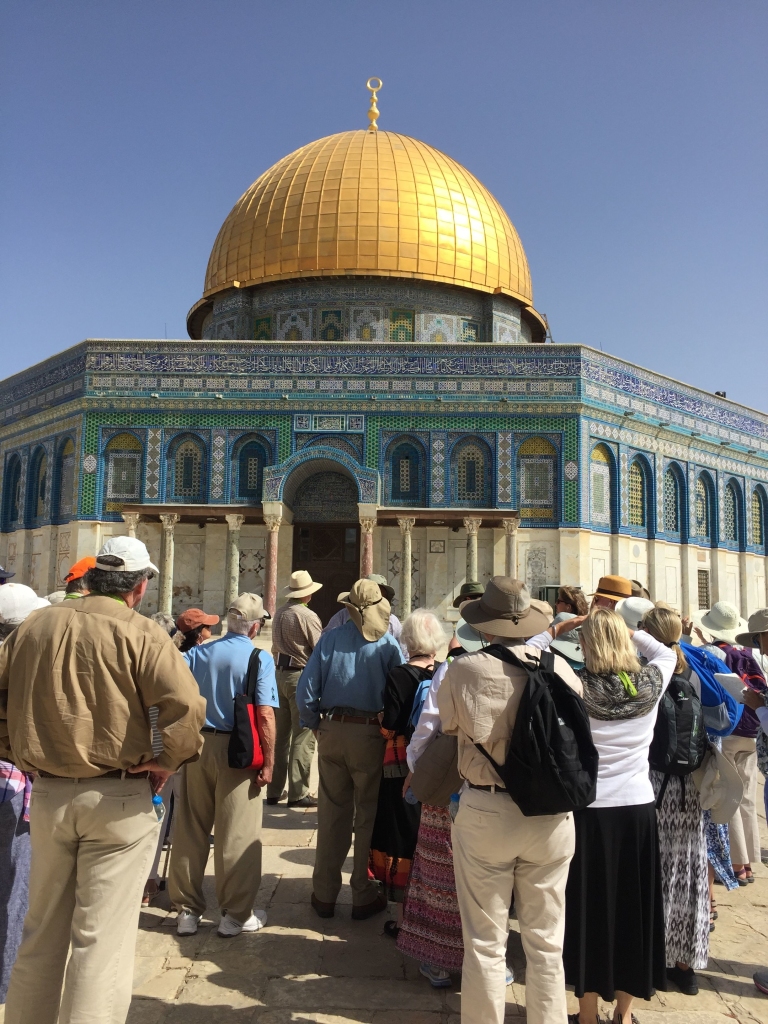 JERUSALEM—Every tourist in town wants to visit the famous Temple Mount, so it pays to get in line early. If you arrived at mid-morning, you’d be waiting in the hot sun for hours.
JERUSALEM—Every tourist in town wants to visit the famous Temple Mount, so it pays to get in line early. If you arrived at mid-morning, you’d be waiting in the hot sun for hours.
Once in the queue, the first thing I noticed was the separate VIP entrances for Jews. The entrance for the Chosen People was wide, as if to accommodate a large influx, but the way designated for the rest of us was quite narrow. The Jews were ambling right through their gates; our line was slow moving. We were subjected both to limited personal space and extra security.
I had nothing better to do while waiting, so I looked around to see how the system here worked. I was surprised to see that the Jewish men and women used “genderized” gates. Men went through a wide portal on the left, women entered through a duplicate portal on the right. This reminded me that in Orthodox synagogues, men and women are segregated into sections during the worship, and I imagine the purpose is to prevent the fairer sex from distracting the men. Heaven knows men really are so distractible: a shapely leg, a slender neck, a long mane of dark, rich curls — any of these can highjack a guy’s attention and shoot down his intention to focus on the Lord.
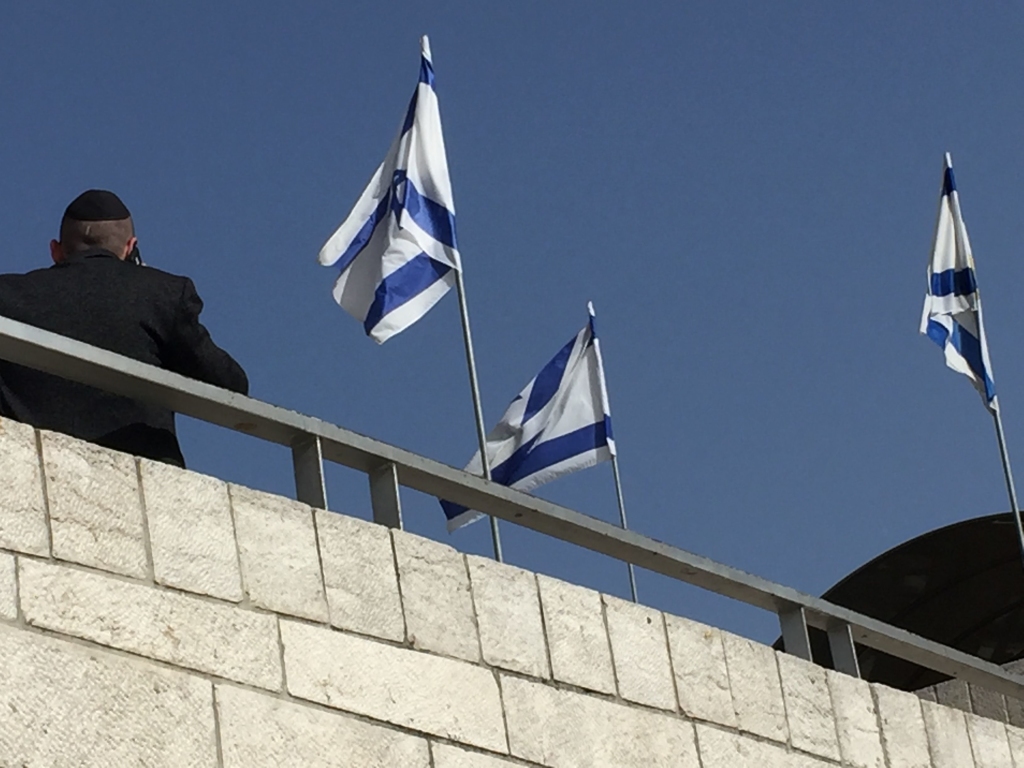 So while the Jews were given this extra aid toward purity, we lascivious Gentiles were tossed together in one line, left to our own will power to keep our thoughts in check. It’s okay though, because all of us females had been forced to wear extremely modest clothing due to the Muslim rules on the hilltop. The Jews control access to the Western Wall at the base of the Temple Mount, but the Muslims control and patrol the actual Temple Mount. You had to pass through this initial security gate to reach either destination.
So while the Jews were given this extra aid toward purity, we lascivious Gentiles were tossed together in one line, left to our own will power to keep our thoughts in check. It’s okay though, because all of us females had been forced to wear extremely modest clothing due to the Muslim rules on the hilltop. The Jews control access to the Western Wall at the base of the Temple Mount, but the Muslims control and patrol the actual Temple Mount. You had to pass through this initial security gate to reach either destination.
The sun was scorching, so I had worn a white linen sundress. Since I live in a subtropical climate back home, I know firsthand that white is the best color to help offset the effects of the burning ball of fire in the sky. But my color choice would soon become the cause of tribulation. For additional modesty, I wore a silk wrap around my shoulders and chest and a broad-rimmed straw hat over my head, as well as sunglasses. The only part of me that wasn’t covered was below my elbows and a bit of leg between mid-calf and my sandaled feet.
“Good point,” I said, grabbing an extra skirt with an elastic waist; in case of emergency, I could wear this skirt hanging low under my dress and manage to cover my ankles. I stuffed this gauzy skirt in my pocketbook, just in case. It turned out to be a good thing.
THE GUARD CHASED ME DOWN
Once we passed through the Israeli security, we shuffled along a steep uphill boardwalk to take us to the Temple Mount. On the hilltop, we were busy snapping photos of the Dome of the Rock, an Islamic Shrine built in the 7th century A.D. The beautiful tiled walls and bright golden dome are captivating.
To Muslims, the site is sacred as the place from which the prophet Muhammad ascended to Heaven; to Jews and Christians, this spot is holy because it is Mt. Moriah, where Father Abraham brought his only son Isaac as an offering to the Lord, and the Lord provided a ram as a substitute. Moriah means “the Lord will provide”, and luckily, He provided for me.
We had only been up there about five minutes when I noticed one of the Islamic guards glaring at me. I tried to slip behind Sam and other members of our group to step out of his line of sight. My strategy failed; next thing I knew, he was walking briskly in my direction and then told me to halt. What in the world had I done? Was he worried about my exposed ankles?
“Your dress is too light,” he said, gesturing toward the section covering my lower half. The linen dress was sheer, but I was wearing a slip.
Even so, the bright sun must have struck my form in such a way that, as I walked past this guard, he had seen the outline of my legs. He was prepared to expel me, but I pulled my brown paisley skirt from my bag.
“Look, I have this,” i said.
“Put it on — IMMEDIATElY,” he ordered. “IMMEDIATELY.”
“Okay, will do,” I said, stepping over to the side. The man continued to monitor me. There was no place to go inside and change, as the only buildings up there were off limits to non-Muslims.
“How am I going to do this without exposing myself further?” I asked. Perhaps if my knees showed while I pulled up the second skirt, the guard would become irate.
Fellow pilgrim Elizabeth Hagood was nearby, and she was quick thinking. “We’ll form a screen around you,” she said. So as Elizabeth and her husband Maybank and Sam stood around me, blocking me from world view, I managed to slip the second skirt into place underneath the sundress. When I emerged from behind the human screen, I was adequately robed. The guard nodded in satisfaction and marched away.
But the modesty guards weren’t finished yet. About 10 minutes later, we walked up the steps leading to the esplanade around the Dome of the Rock. Another of the guards walked toward me. “Hello there…..my friend,” he said, looking me over.
What had I done now? I nodded but did not say anything. We had been told that it was not culturally fluent in the Arab world for women to speak to men that they did not know, and that if an Arab man greeted us on the street, we should not look at him nor speak to him.
While I waited to see what would come next, the guard surveyed my pilgrim’s stick. Several days earlier, I had found a lovely bamboo pole in the woods and had been carrying it around ever since. I had decorated it with three bird feathers, sticking out of the top. My pilgrim staff got a lot of attention; it was definitely more of a head turner than I was. The guard must have wanted to get a closer look at it, for security reasons.
“Are you enjoying yourself?” he asked me.
I had to reply.
“Yes, we are,” I said.
“Good, good,” he said, smiling. “Have a nice day.” He walked off, and I breathed a sigh of relief. So far, so good.
On the tabletop of the Mount, our church group split up briefly; we were given about 10 minutes to walk around the famous shrine on our own. Only Muslims were allowed to venture inside, but it was permissible for us to walk the perimeter of the building, admire its beauty, and enjoy the panoramic view of Jerusalem. Our guide told us that Jews did not wish to come up on the Temple Mount because no one knows precisely where the Temple of Solomon or the later-built Temple of Herod had been located. Therefore, Jews did not wish to offend God by inadvertently stepping on the spot of the Holy of Holies. Only the high priest had been allowed inside this central area, and even he could only venture in once a year to offer the sacrifice on the Day of Atonement (Yom Kippur).
The Holy of Holies!! When I heard this, my heart rose up within me. As a Christian, I believe that my body is the temple of the Holy Spirit. I trust that I have been sanctified by the blood of Christ. Therefore, I have nothing to fear. If I were to tread upon the sacred spot, I would consider it a great blessing and expect that something from that ethereal place might shimmer around me.
Despite wishing that I could divine the location, I did not discern any cosmic vibrations or gut-level hunches or angelic apparitions to guide me. Soon enough, my thoughts shifted. I began trying to peer through the lattice grills in the Dome of the Rock to catch a glimpse of what might be going on inside. 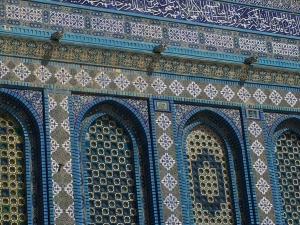 But there were guards at the doors and I did not want to get in trouble again, so before long, I gave up. The overhead sun was burning down. Wanting to enjoy a moment of shade, I stepped under the cover of an open-air pavilion.
But there were guards at the doors and I did not want to get in trouble again, so before long, I gave up. The overhead sun was burning down. Wanting to enjoy a moment of shade, I stepped under the cover of an open-air pavilion.
UNDER THE VEIL
Almost immediately, I felt someone nearby was looking at me; I turned to my left. A young mother sat there, her toddler squatting by her side, playing contentedly with a toy truck. She was completely veiled in black, every bit of her covered except for her brown eyes which gazed out through a slit. We were a study in contrasts: she was all in black, I was all in white. Only her eyes were exposed, while my eyes were concealed behind sunglasses.
Yet when I saw her, something about her body language — the way her hip and shoulder naturally leaned down toward the young child by her side — evoked a feeling of nostalgia in me, the mother of three boys. I remembered feeling a visceral attachment like that to my young boys.
Out of the blue, a look of recognition and understanding passed between us. She smiled warmly at me — and while her face was covered, I could see the kindness in her eyes. As I smiled back, a jolt of current jumped between us. In that mesmerizing instant, it was as if she were unveiled and I were veiled; as if she were the older mother and I were the younger mother; as if she were Westerner and I were the Arab — we had co-mingled and become reverse parts of the same person, the universal Mother.
The feeling of unity was overpowering; I could not utter a word. I stood there, caught in the electricity of the feeling, paralyzed by the onrush of the unexpected emotion reaching me from her gazing eyes. Whatever our differences may have been, and they were immense, those differences were created by mankind, not by God; for He is always trying to pull us together to see that our basic relationship is as brother and sister souls formed and fashioned by the One, Father God.
For about 30 seconds, I experienced an eruption of love for a complete stranger whose face I was not even permitted to see. And then the moment passed, and I snapped back into my separateness. Part of me wanted to say something to her, but no words seemed adequate to express what I felt. As I stepped out of the shelter of the pavilion, I said a silent prayer for the young mother and her son, grateful for our unexpected connection.
SHE WAS WAILING AT THE WALL
Later that afternoon, we visited the Western Wall, also nicknamed the Wailing Wall. This limestone wall is sacred to the Jews because it was built by King Herod the Great during Roman occupation, as part of the retaining wall for the Temple Mount. Jews do not use the title Wailing Wall, a derogatory term coined by non-Jews in bygone eras to describe the wailing and tearful prayers of Jews who would cry about the loss of their Temples and loss of control of their most sacred site.
 The Western Wall is considered the closest part of the lower section to where the Temple actually stood. And since the Jews do not venture up to the Mount, this part of the wall is their best physical connection to the old Temple. Every day, scores of Jews and visitors line up at the wall, and this may be the most iconic place to visit in Jerusalem if one wants to feel connected to the Jewish tradition.
The Western Wall is considered the closest part of the lower section to where the Temple actually stood. And since the Jews do not venture up to the Mount, this part of the wall is their best physical connection to the old Temple. Every day, scores of Jews and visitors line up at the wall, and this may be the most iconic place to visit in Jerusalem if one wants to feel connected to the Jewish tradition.
As seen earlier at the entrance gates, here the men and women were segregated again. Men in their yamakas entered to the left, and women — most wearing black, knitted head coverings — entered on the right, with a barrier in between. Luckily, Gentiles were not kept in a little corner here but were allowed to mix in freely with Jews of their same gender.
I had written down six or seven prayers in advance on little pieces of paper, to stick into cracks in the wall. My friend Laura Wichmann Hipp had inserted a prayer here for me and my family on her pilgrimage some years ago, and I had been deeply touched that she had remembered me. I planned to return the favor, leaving a prayer for her and hers, as well as prayers for each of my children and a few others. But soon I faced an obstacle: there was no room at the inn.
Everywhere I looked, the narrow openings were already bursting with folded pieces of paper. In addition, hundreds of the little folded notes littered the ground; I guessed that new visitors would remove the prayers of others, letting them flutter down, in order to insert their own. No way was I going to do that. Such behavior seemed worse than unknowingly walking over the Holy of Holies.
I felt sure I could find a receptive spot, if I kept looking. I kept inching along the wall, away from the more crowded center. No vacancy could be found.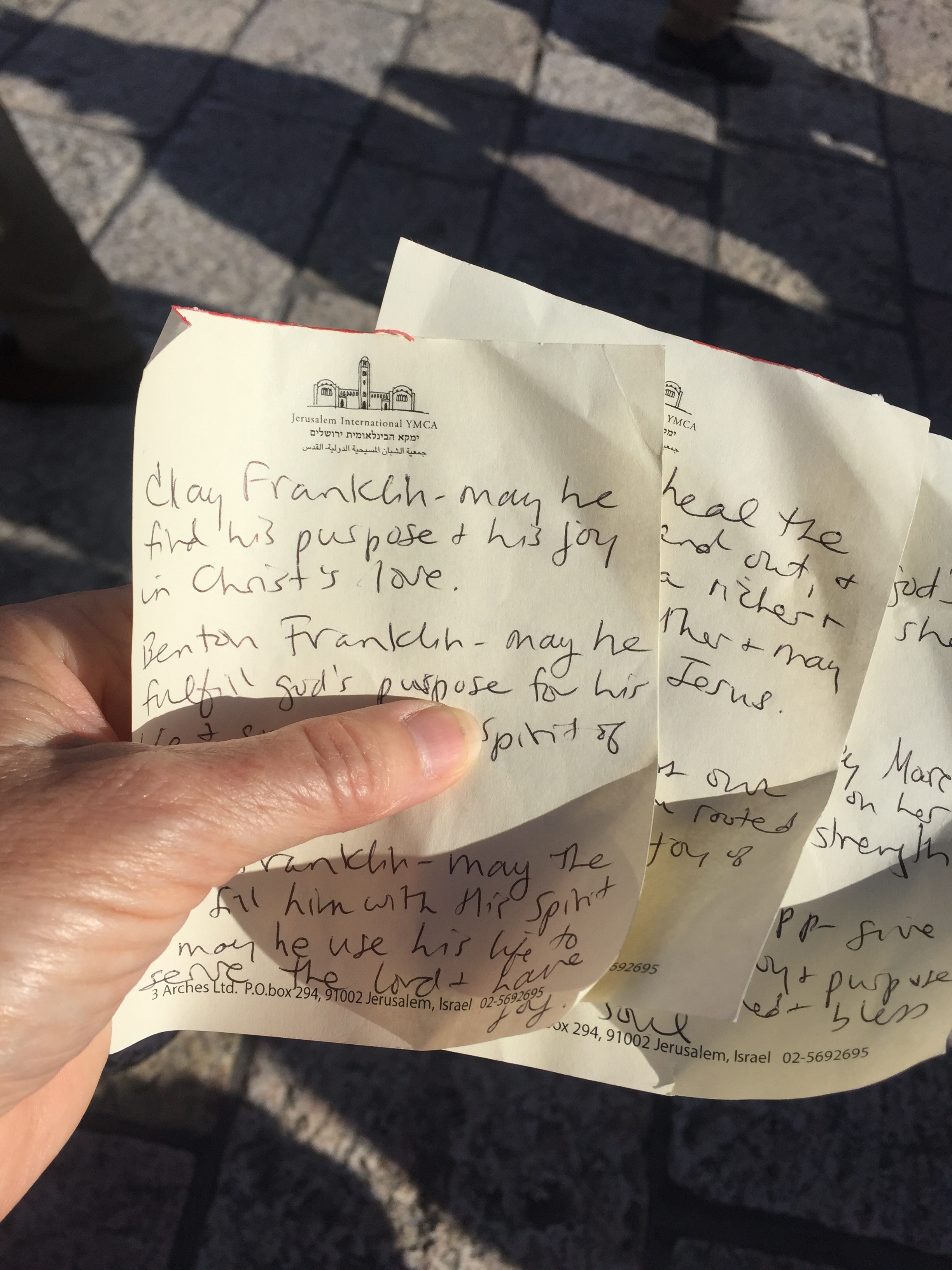
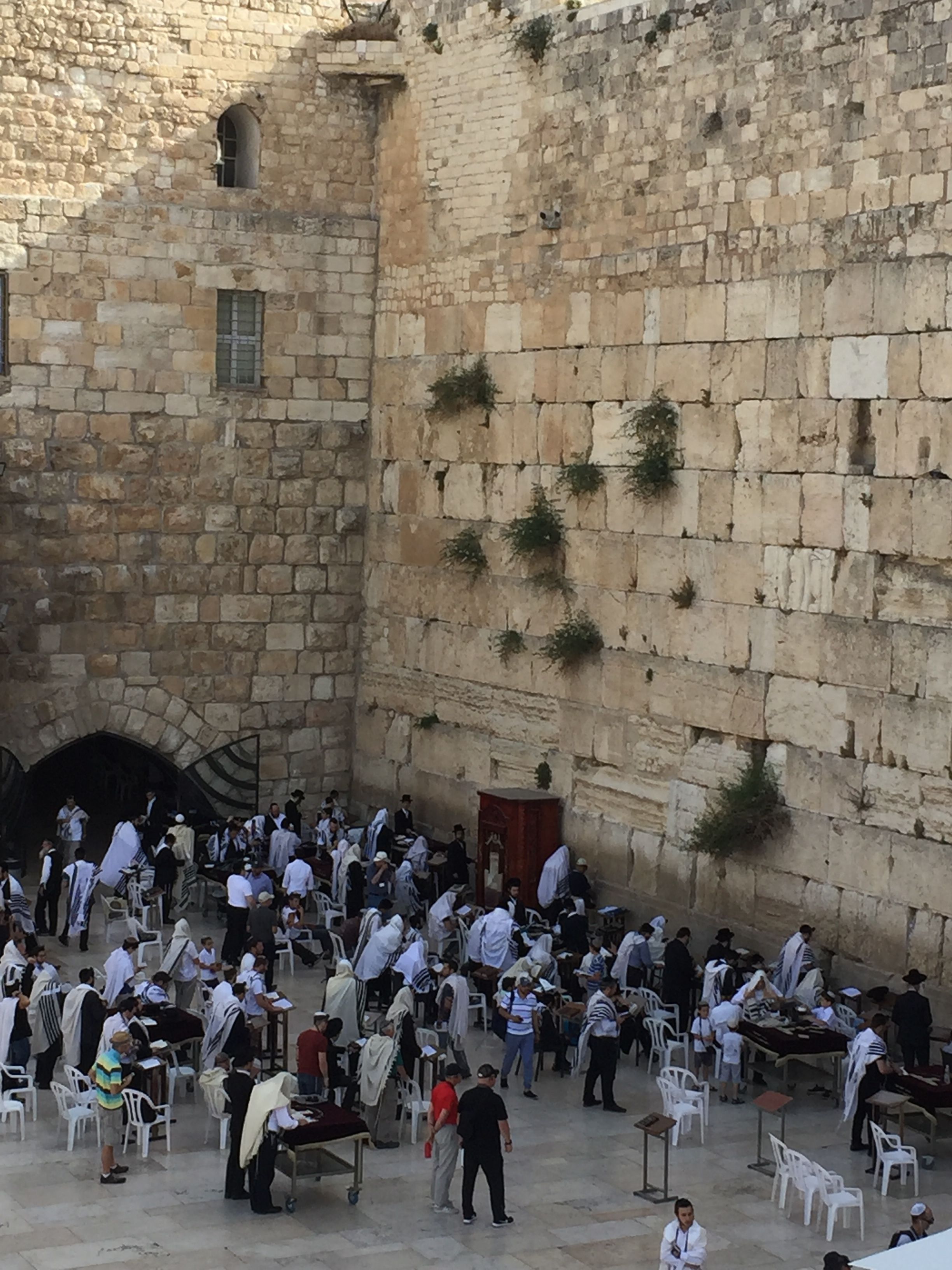
Eventually I ended up at the farthest end, where about 15 Israeli women were sitting in rows of folding chairs and praying from little books. I wormed my way around them and into the corner of this narrow section, finally seeing a few gaps where I could stuff my notes, praying over my requests silently as I forced them into the tight space. In my efforts, I dislodged one or two other prayers, which floated like falling leaves to the ground.
Oh no!! My heart skipped a beat; quickly I bent over and retrieved them. In short order I had re-inserted them into the face of the wall. When all my work was finished, I stood beside the whitish limestone wall, placing my outstretched hand against its rough surface. A 20-something year old Israeli woman stood to my right, shaking and weeping as she prayed, her face against the wall. Her back was to me.
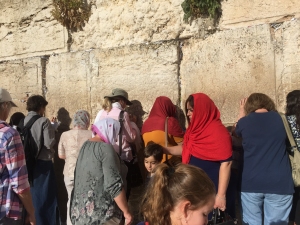 Yet I felt the burden of her heart, as emotions gushed out of her shaking body. The wall was her means of access to the throne of God. My access, of course, is through the One who is the Way, the Truth, and the Life, who sits at the right hand of the Father, who intercedes for us day and night. So I stood there behind her, eyes closed, connecting this woman and her tears to the Savior, gently asking Jesus to hear her prayers, to deliver her from her woe, to fill her with his peace. My focus was steady, and I continued to channel loving energy toward this young woman for several minutes.
Yet I felt the burden of her heart, as emotions gushed out of her shaking body. The wall was her means of access to the throne of God. My access, of course, is through the One who is the Way, the Truth, and the Life, who sits at the right hand of the Father, who intercedes for us day and night. So I stood there behind her, eyes closed, connecting this woman and her tears to the Savior, gently asking Jesus to hear her prayers, to deliver her from her woe, to fill her with his peace. My focus was steady, and I continued to channel loving energy toward this young woman for several minutes.
She seemed unaware of me and yet, her breathing calmed and her weeping ebbed. Seeming relieved, she finished her prayer and stepped away from the wall, keeping her face toward it as she backed away, as is the custom.
For the first time, I put myself in her shoes. What would it be like, not to have the certainty of God’s immediate forgiveness? This gift of Jesus to the world — the ability to approach God as our Father and to seek reconciliation based on the atoning sacrifice of Christ — is so central to my soul that I cannot imagine functioning without it. I could feel the love that this woman had for God, and her respect for this sacred place, and I trusted that He loves her and heard her prayers. But I was acutely conscious of the opening in the curtain which Christ made for us, and more mindful of the gift of being able to approach God under that mantle of this perfect love.
I was reminded of the words of Jesus as he looked down over the city: “O Jerusalem, Jerusalem, thou that killest the prophets, and stonest them which are sent unto thee, how often would I have gathered thy children together, even as a hen gathereth her chickens under her wings, and ye would not!”
Matthew 23:37
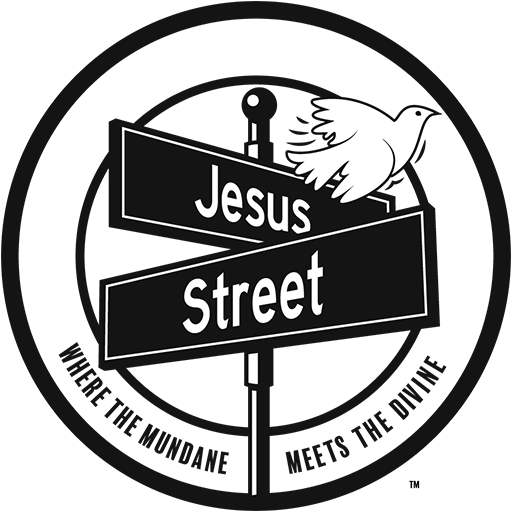
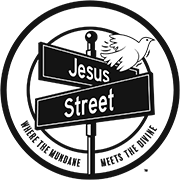

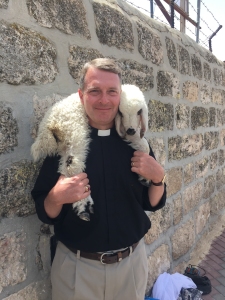
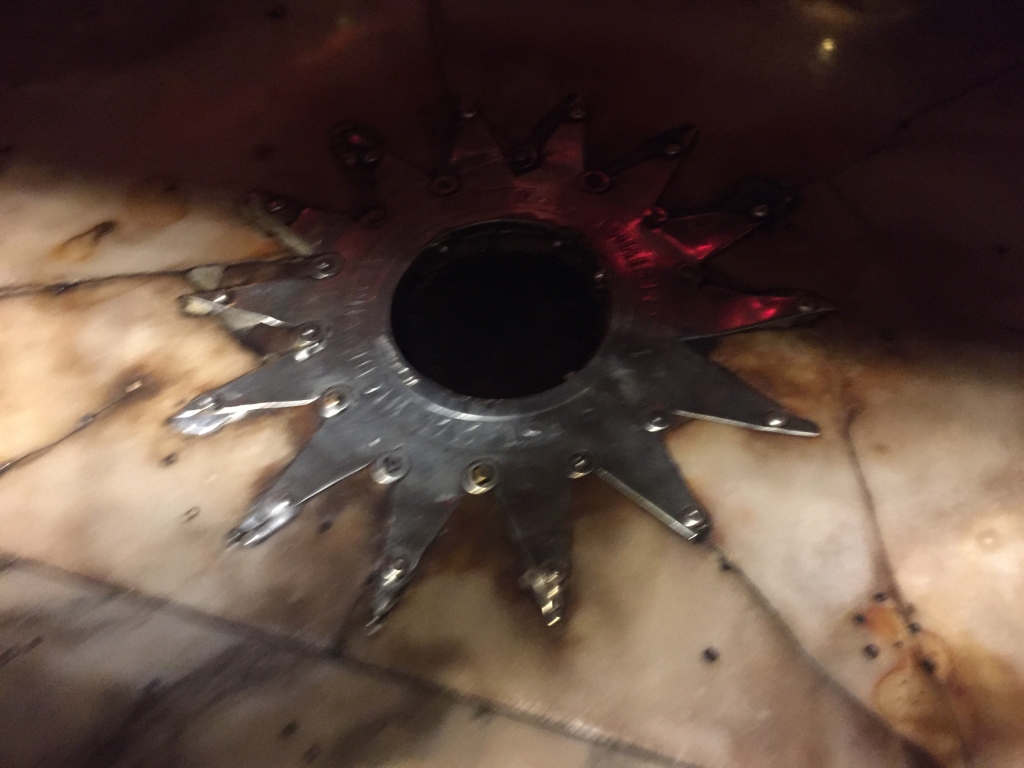
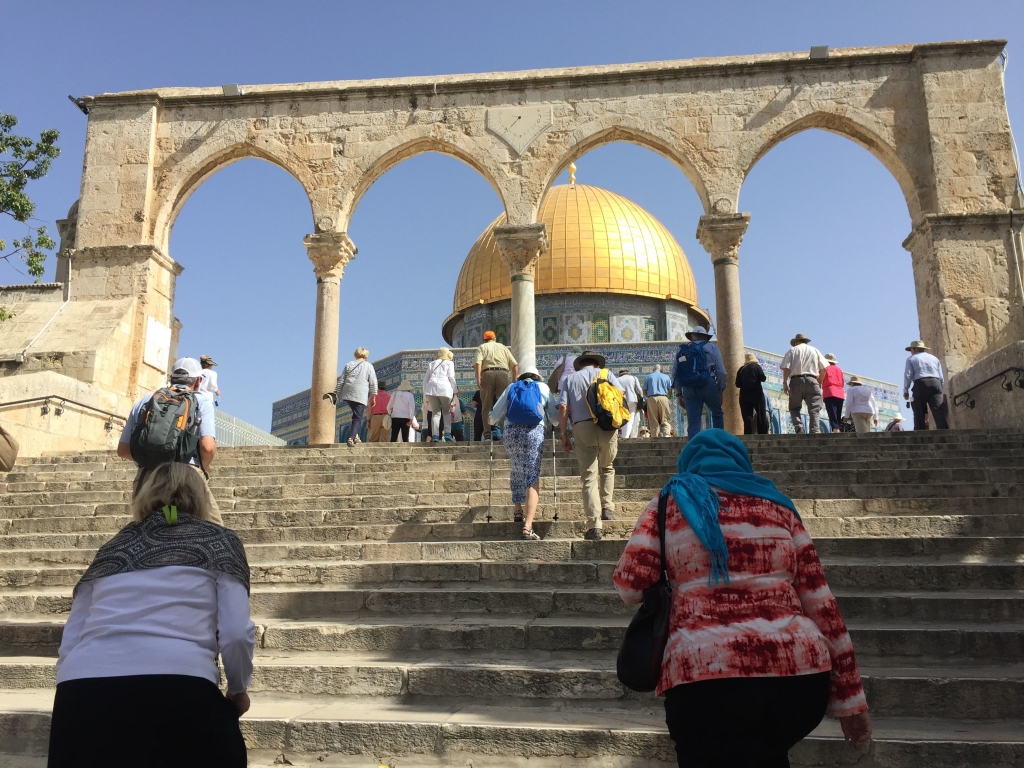
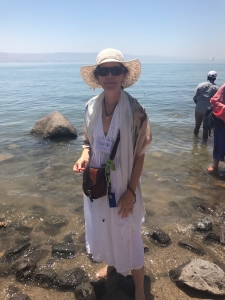
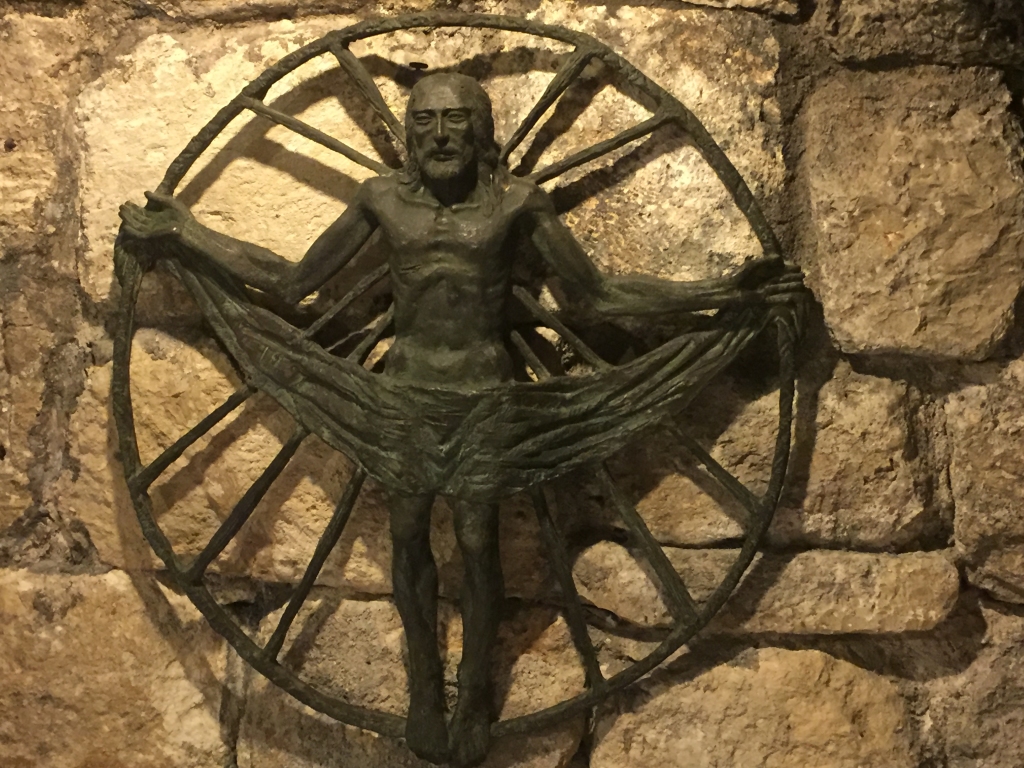
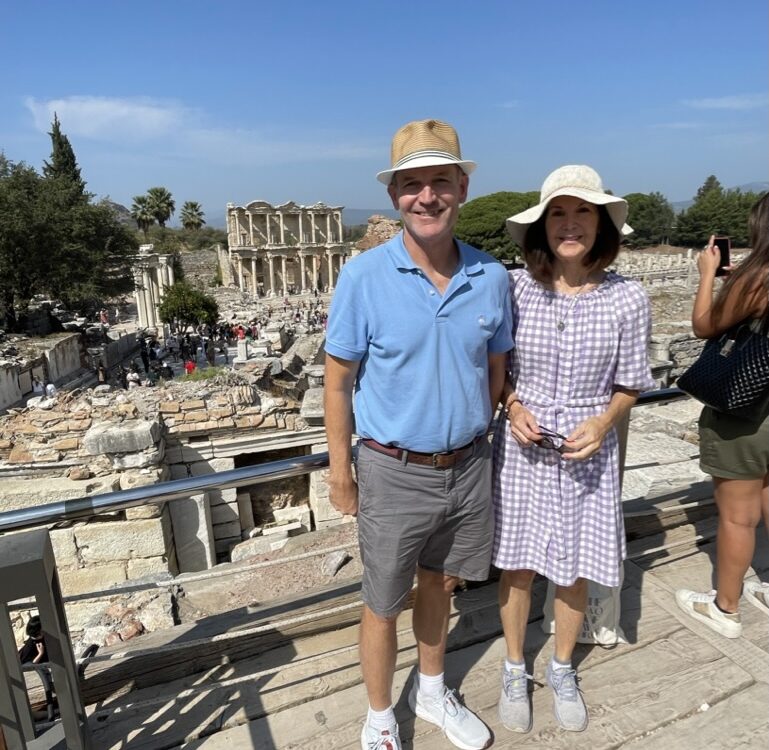
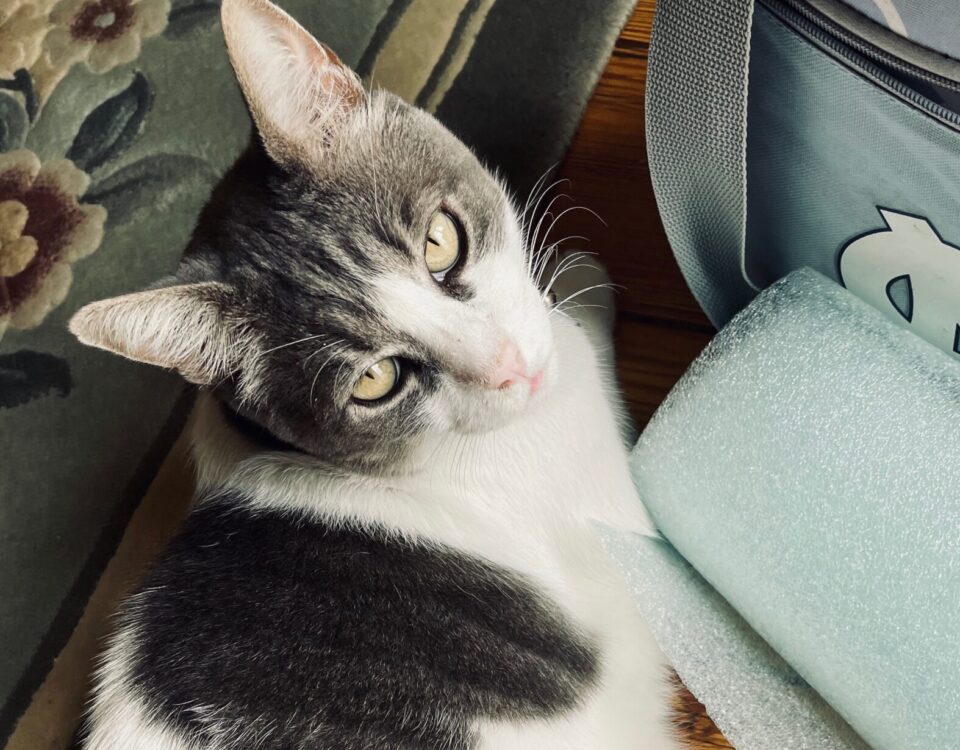

1 Comment
Pringle. My girls, daughtet, grand and three greats did Laura’s Tea party your last week for the second great graduation celebration. Loved it and I am devouring You Forever Friend for the second time. You all are amazing and Preston was truly a gem. My best. Susie Patton Knoxville TN. Church St United Methodist Church which is on the Historic Register.